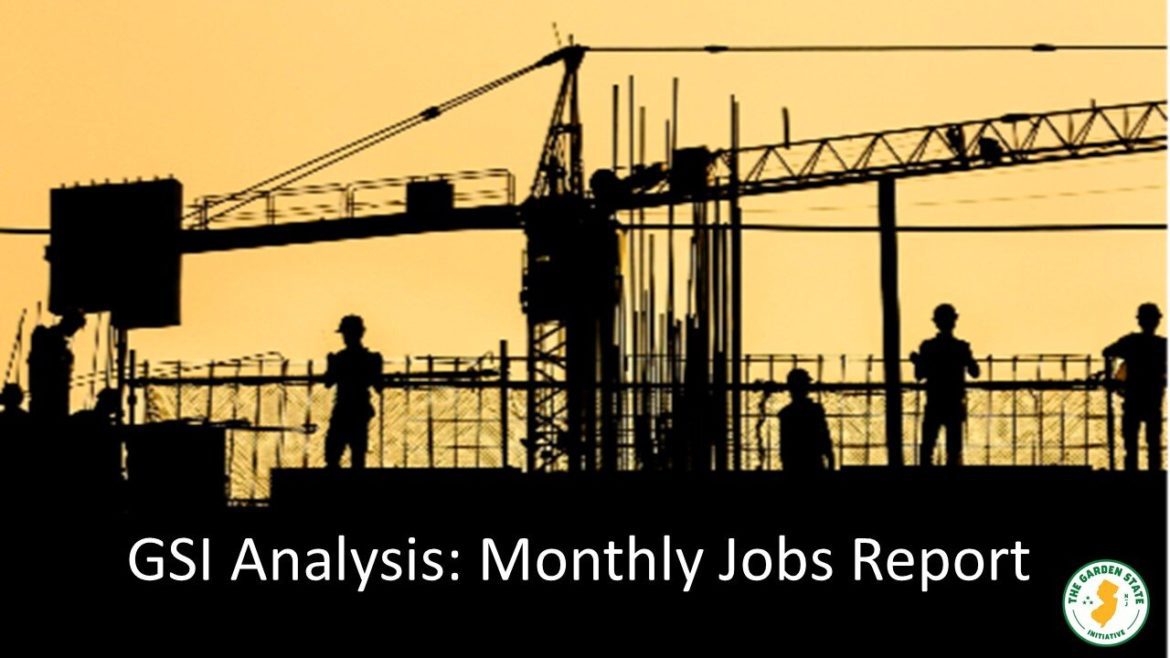Unemployment, TRANSFORMING OUR BUSINESS CLIMATE, Labor
GSI Analysis: Sept. ’21 U.S. & New Jersey Jobs Report: NJ Unemployment now 3rd Highest in U.S. with a Workforce Nearly 150K Smaller

-
State adds 21,500 jobs, remains 200,000 below pre-pandemic level
-
Unemployment Rate declines .1% to 7.1%, but rises to 3rd highest in the U.S.
-
NJ’s Unemployment Rate is 2.3% higher than U.S. average, which fell .4% to 4.8%
-
Workforce remains 146,700 below February 2020 level
-
NJ is 1 of 2 states not to see a statistically significant reduction in unemployment over the last 12 months
On October 22nd, the U.S. Bureau of Labor Statistics released its State Employment and Unemployment Summary for the 50 states and District of Columbia for September 2021. Dr. Charles Steindel, former Chief Economist of the State of New Jersey, analyzed the report for the Garden State Initiative along with the October 21st release of the September New Jersey employment report by the state’s Department of Labor and Workforce Development:

New Jersey’s job count grew another 21,500 in September, which is a strong gain at any time, and stands out given the modest (not precisely comparable) national increase of only 194,000 (New York state’s increase was a mere 8,000). The total number of jobs in the state edged above 4 million for the first time since March 2020. Still, New Jersey remains more than 200,000 below our February 2020 job peak. Moreover, only a bit more than half of September’s gain was in the private sector.
Public sector jobs rose 9,600 in September, making it the second straight month to see unusually high growth in government employment. Although government employment is still about 18,000 under its peak, it seems quite unlikely that marked monthly gains will continue.
In the private sector, virtually all industries saw gains; the most notable ones were in construction (up 2,200 or 1.5%), leisure and hospitality (2,500 or .8%) and professional and business services (4,300 or .6%).
On the labor force front, while 1,900 workers entered the workforce in June, the current workforce of 4,432,100 remains 146,700 below the February 2020 level of 4,578,800.
Once again, the unemployment side of the report is much less upbeat than the job count. The unemployment rate did tick down from 7.2% to 7.1%, but the gap to the national rate widened even more to a yawning 2.3 percentage points. After ranking 4th highest in August, New Jersey rose to the 3rd highest unemployment rate in a tie with New York, while California and Nevada tied for the highest rate at 7.5%. Of note, according to today’s report, New Jersey is one of two states that has not seen a statistically significant drop in its unemployment rate over the last 12 months (the figure has moved from 7.8% to 7.1%, but that’s within the margin of error). The only other state in this camp is Maine, but Maine’s move was from 4.9% to 4.8%.
While our job gain looks large relative to the national figure, the reverse is true for the number of employed residents, with New Jersey’s 5,900 increase pales when compared to the nation’s 526,000. The puzzle of the discrepancy between the job numbers and unemployment seems to get deeper every month; the general view is that the job figures are more reliable, but the gap between the two sets of numbers raises the question of how and when it will be closed: will it involve a drop in unemployment accompanied by marked gains in resident employment? Or a fall-off in job growth? Or some combination of both?
The bottom line is that the report is good news on the job front—if we continue recent trends, and get the anticipated upward revision to the job count, New Jersey should set a new job peak at some point in 2022—but more sobering on the unemployment side.
